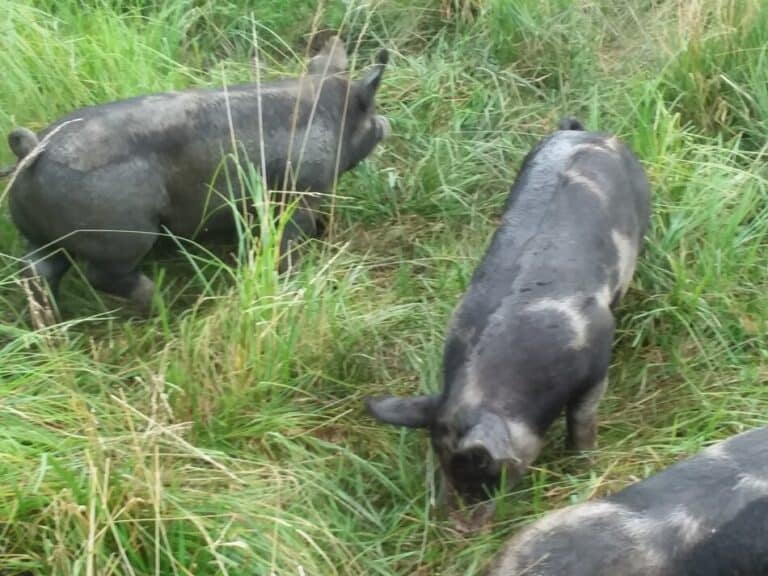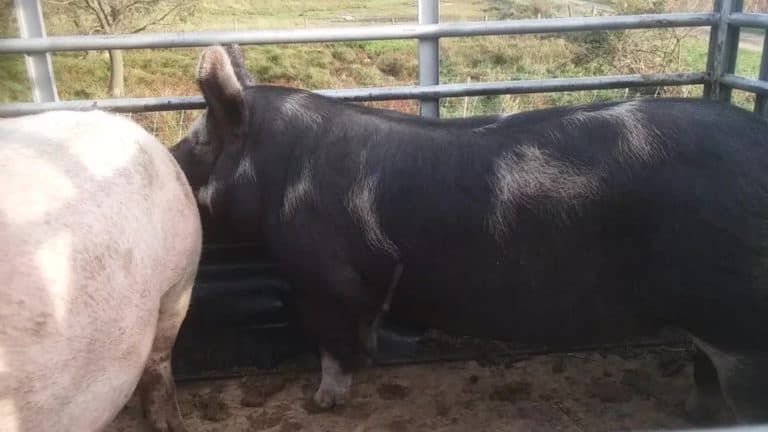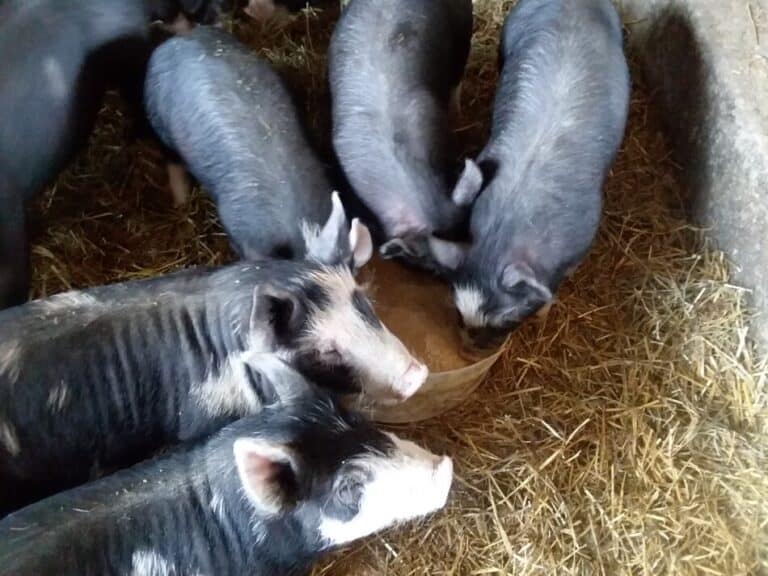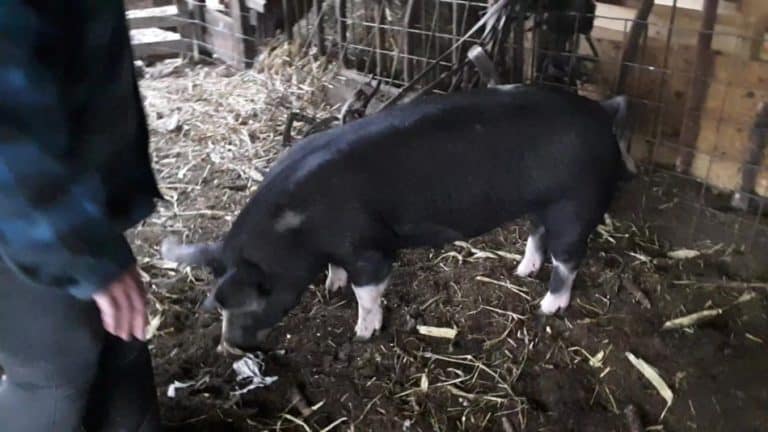How Many Pigs Do You Need To Make A Profit?
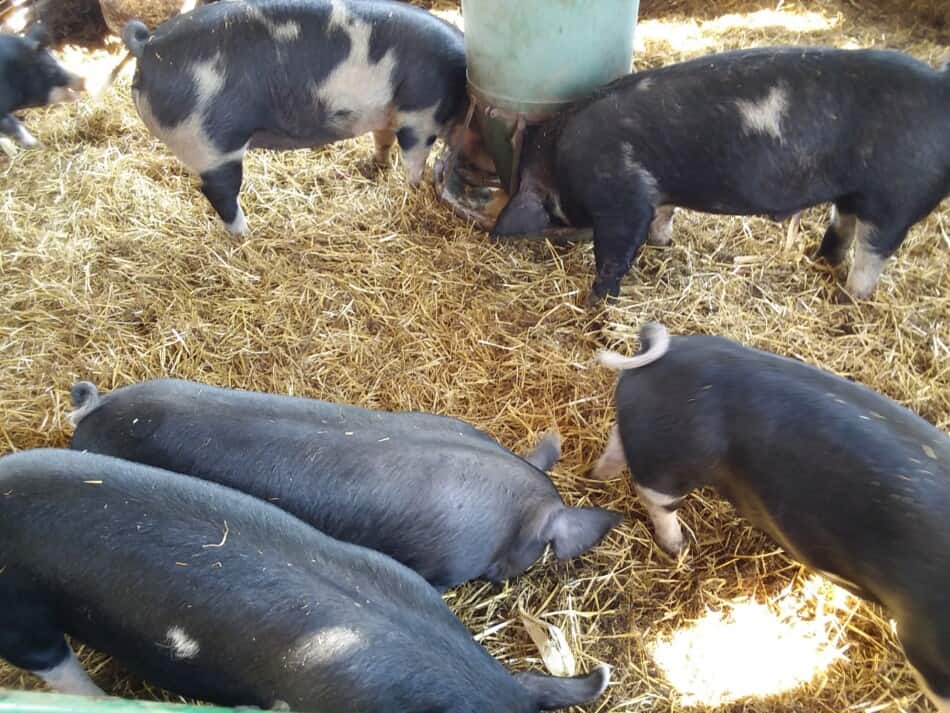
You can and should make a profit off of every pig you raise, the question is how many pigs do you need to raise to hit your net income goal for your pig business.
You need one pig that is sold for more than the cost to raise it, to make a profit. Most people raising pigs would want to have multiple pigs sold per year to get a specified income. The number of pigs you need depends upon your expenses, how you are selling them and the profit per pig.
Is Raising Pigs For Meat Worth It? gives you an idea of your costs for raising your pigs from purchasing the feeder pigs to putting the pork in the freezer.
Here is a chart I put together to give you an idea of how some “pig math” will work.
I chose a few common ways of selling pigs and picked a goal income of $10,000 (choose your own goal and adjust the math accordingly) so you can see how many pigs you would need to make them a business.
| How pigs are sold | Profit per pig | Profit range | Pigs sold to profit $10,000 |
| Direct sales to customer | $400 | $200-600 | 25 pigs at $400 profit |
| At livestock auction | $150 | -$ to $150 | 67 pigs at $150 profit |
| Contract pigs | $5 | $5-20 | 1,429 pigs at $5 profit 1,000 pigs at $10 profit 500 pigs at $20 profit |
You should make a profit for every pig you sell
You should be making a profit (net profit) on every pig you sell. So the answer to how many pigs do you need to make a profit is….one.
The catch is most folks would not consider the net profit from one pig to be much of an income, especially if you are hoping to have pigs as a side or full time business.
Now you have to ask yourself, what is the net profit you want from your pig business for the year? Once you have that number, now divide it by the profit per pig and you know how many pigs you need to raise to hit your goal.
Know how profit is being calculated per pig
When looking around for prices and profits other folks are getting for their pigs, realize that people calculate profit differently. You need to know what those numbers include and exclude before you apply that number to your pigs.
For example: when I tell you I plan to profit $150 per pig at auction this spring, what do you think?
Hopefully you thought to yourself: whoa, how are you calculating that number? Excellent question.
I always use feed costs subtracted from cost of feeder pig. I am not counting in my time, improvements, buildings, etc.
Many folks do not figure prices this way, arguing that I should be including cost of my time and improvements to the enterprise, at least. I understand the concern and agree that those things and more should be kept in mind.
Even so, for the sake of simplicity, I use only feed and animal costs, that way any additional costs you can figure in as you see fit.
You may need to pay rent, consider opportunity costs (what else you could do with your time, money other resources), pay yourself or hired help, include the cost of equipment, the list goes on.
If it makes more sense to you to include these costs or any other you think of, please do.
The way you raise and sell your pigs determines your profits
There 3 common ways to raise and sell pigs: custom raised and sold (also called direct selling), selling at auction or direct to butcher and commercially farmed contract hog raising.
In general, the more money you have in facilities and equipment, the less money you will make per pig but the more pigs you can raise for your time and facilities. This is the trade off we must choose between.
The aspect to consider is the closer you are to the person who eats the pork the more profit you keep.
This is why custom raised pig are profiting more per pig than commercially raised pigs. Custom pigs are sold directly to the eater.
Custom raised pigs make $400 profit, per pig
Direct marketed or custom raised pigs are selling for an average profit of $400 per pig.
$400 profit per pig! Why would you sell anywhere else? Well, that $400 comes with more work and risk to you than the other lower paying options. It’s all a matter of what you want to do (or not do) to get your pigs sold.
Before we go any further, realize that $400 depends upon your market and your marketing. I’m sure some folks are making less and other folks are making more profit per pig.
I just am using $400 as a reasonable average, since when I can find the numbers, I end up with places making anywhere from $200-600 per pig, so I just went with a nice middle ground number.
If you are getting $400 net profit from each pig sold, you would need to sell 25 pigs per year to make $10,000 from your pig operation.
How To Naturally Raise Happy Pigs shows you the things your pigs need to be happy and healthy. Happy pigs=happy you!
Direct marketed pigs keep more profit per pig for the pig raiser
If you are custom raising pigs for customers (direct selling pork) you are keeping the majority of the profit from the pigs you have raised.
Why? You have cut out the middlemen type transactions that all need paid for and are usually not done by the farmer so s/he does not get the money for that type of work.
Direct marketed pigs will take more time and coordination to sell
Custom raised pigs are going to bring in the most profit per pig, but are also going to cost you the most in time and coordinating with others, including the customer and the butcher.
This is why you keep more of the money, you are doing more of the work.
Here is an example budget for custom raised pigs:
- cost of feeder pig $100 each
- feed costs $200
- processing costs $250
- selling price per pound of meat $6.50 (average)
The expenses are 100+200+250=$550 which are the cost of the pig, feed and processing.
The income is $6.50 per pound for 150 pounds of pork, which is $975. $975-550=$425
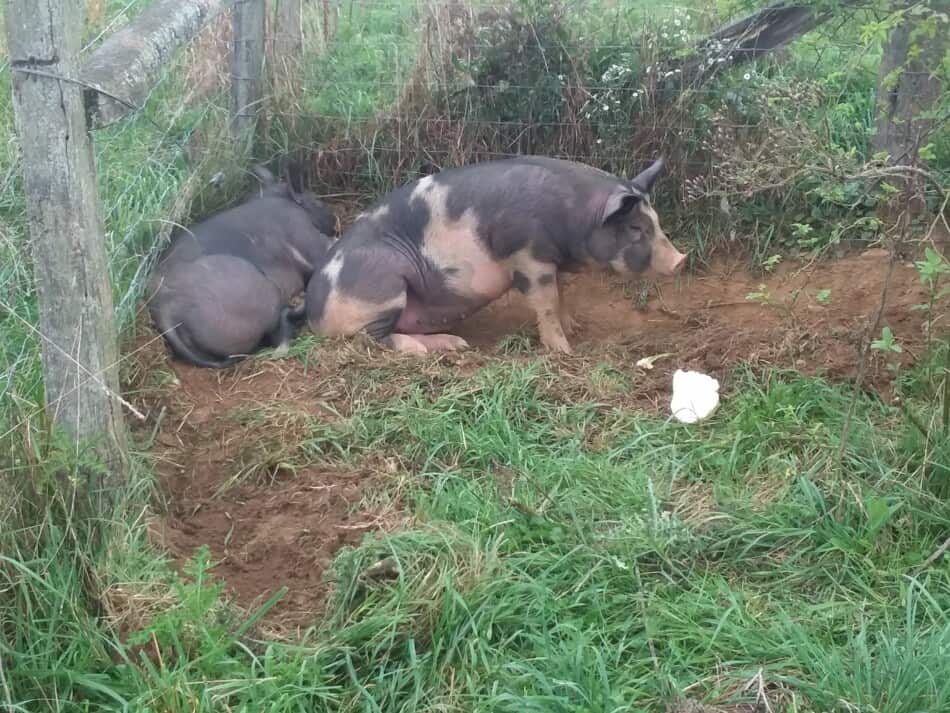
Small pig farmers selling at auction make $150 per pig
Right now, finished pigs at auction (in my area) are brining in about a $150 profit per pig. Once again, this is just feed and cost of the feeder pig.
Sticking with the $10,000 goal, keeping $150 per finished pig means you need to raise 66.6, so 67 pigs per year to keep $10,000.
Pig prices at auction vary with supply and season
The good news here is that this is easy, you feed the pigs, take them to the sale when they are ready and get paid.
The bad news is that you don’t control what you get paid or what all shows up at the auction that day.
If you take your pigs on a day with a surplus of pigs, you are likely to get a lower price than you had planned on.
This is the catch with an auction, you don’t know until the pigs are sold. Of course, you have an idea of prices from looking at the last few market reports, but until yours are sold, you are just guessing.
You’ll notice in the table at the beginning of this article, there is a section on profit range. Notice for auctions it can be negative, meaning you loose money selling your pigs.
Always, of course not, but sometimes, yes, you will lose money by selling your pigs at auction. This is the risk of auctions.
Commercial pig farms plan to make $5 per pig profit
If you are looking at more of an industrial pig model, the National Hog Farmer has an article about 10 rules for hog farmers, sited in the quote below.
For most owners, a $5-7 profit/hog long-term is a solid return. “If you can’t make it on $5-7/hog, you need to either find an exit strategy or raise more pigs,” says Hargis.
https://www.nationalhogfarmer.com/mag/farming_ten_simple_rules
If you take the $5 profit per pig and figure you are thinking of a net income of $10,000 per year from you pig operation, you would need to raise and sell 2,000 pigs.
What happens if your profit per pig is closer to $7 each and you still want to make $10,000? This will lower the pigs you need to raise to 1,428.57, but since you can’t have .57 of a pig, just consider that to be 1,429 pigs.
If you want more income, you would need to raise more pigs or increase your profit margin per pig. If your profit per pig were in the $10 per pig range, you would need to raise 1,000 pigs to make $10,000 per year.
Continuing in the National Hog Farmer article, you will see a section on making $20 per pig, but warning you not to count on that every year. But what would earning $20 profit per pig do for your numbers?
If you are still working with the earn $10,000 per year plan, increasing the profit of a pig to $20 each means you need to raise 500 pigs per year rather than 2,000! That’s a huge difference!
Know that contract pigs require a large cost in buildings and you are dependent upon that company keeping you as a producer.
Year round pigs require some buildings or shelters
Now we get into the expenses that will vary with your farm and your plan for your pigs.
If you need some sort of a building to keep your pigs in, do you have it? Is it set up, ready to roll or do you need to renovate? Changes require money, unless your buildings or shelters are ready to use now.
If you are raising pigs from feeders to finished, you may not need any sort of a building, as long as you are keeping your pigs in the nicer parts of the year.
How Much Space Do Pigs Need? goes over your space needs for your pigs, both indoors and outdoors.
Keeping pigs year round with out a shelter of some sort is going to be hard to do, unless you live in a very mild climate and have a set up that has natural shelters, like wooded areas or hay bales, right in with the pigs.
In my area, Ohio, we get enough cold weather that I would not be comfortable keeping pigs outside in the winter. However, some pig farmers in the Carolinas are keeping pigs outside with wooded shelter belts and hay bales.
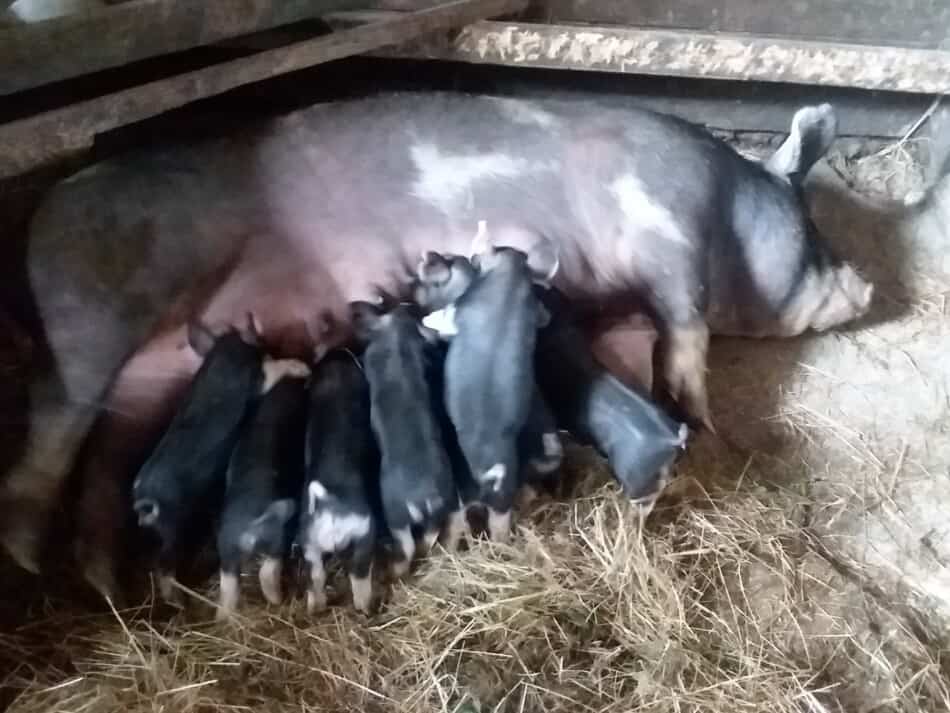
Feed costs are your largest expense for pigs
Feed costs are going to be your largest expense for raising pigs. If your costs are lower than mine, even with the same selling situation, you would keep more money and vice versa.
Be sure to run your numbers initially to see what you can expect for feed costs per pig. You’ll want to have an idea of what you are getting into before you start.
Cost Of Raising Feeder Pigs shows you how to calculate your expected feed expenses for your pigs.
Cost to buy pigs will vary
The cost to purchase your pigs will vary, this is true whether you are talking about breeding stock or feeder pigs. The easiest place to figure this out is to check out market reports for your area and look around online.
If you are doing more of a seasonal pig operation, realize that there will be a premium on those pigs, since not all pigs will be born at a time that suits the season of your area.
Around here, spring feeder pigs are double the cost of fall and winter feeder pigs, as an example. As far as I can tell the pigs are nearly the same quality, it’s the demand is heavy in the spring, which raises prices.
This seasonality does provide an opportunity, if you are flexible about when you can get and raise your pigs, choose a low priced season to buy.
Where To Buy Feeder Pigs goes over your options. Even if you are looking for older pigs, give this article a look.
Know where you will sell your pigs
The final aspect to profits is to know where, exactly where, you will be selling your pigs.
If you plan to sell direct to the customers, you’ll need a custom butcher shop that is close to you and taking more clients.
How close is your nearest butcher shop and do they currently have openings in their schedule?
Local butcher shops will also need animals throughout the year to keep retail cuts of pork ready for customers, someone who just wants a roast or a pack of bacon.
To do this, the butcher shop will have to buy finished pigs.
Where does your local butcher shop get pigs? If you can be a reliable supplier of high quality finished pigs or roasters, let them know.
If you are thinking of the auction route, where is the livestock auction located and can you get there with your finished pigs?
Contract raising pigs is a different ball game, altogether. Generally, pigs are contract raised in areas that have easy access to grain.
Know that this is the most money intensive way to raise pigs and has the least profit per head.
Contract raisers usually own the building and put in the labor and the company they work for owns the pigs, provides the feed and provides the management plan to be followed.
Resources:
National Hog Farmer, Ten Simple Rules To Profitability, making $5-7 per pig in profits
